
![]() Tunisian Tortoise Identification
and Care
Tunisian Tortoise Identification
and Care

A C Highfield
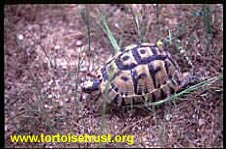
Tunisian tortoises belong to the spur-thighed group, but in 1990 they were described as a new species, Furculachelys nabeulensis, on the basis of their unique appearance and certain other morphological characteristics. In most texts, they are still referred to as 'Testudo graeca'.
You can read more about their natural history in our Field Report.
Tunisian tortoises are small - adult males are usually no more than 130 mm long, adult females no more than 165 mm long. This is much smaller, say, than Testudo graeca from Morocco. They are very brightly coloured, with a light yellow shell with striking black dots in the centre of the scutes. The scales of the legs are pale cream and black, and there is usually a central yellowish mark on top of the head.
These photos should help you to identify these tortoises quite easily, as they are highly distinctive.
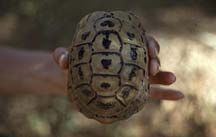
Above: Bright yellow shell and very distinctive black markings on this adult male
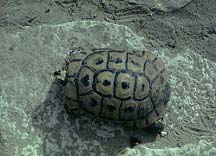
Above: The characteristic yellow head marking is clearly visible here
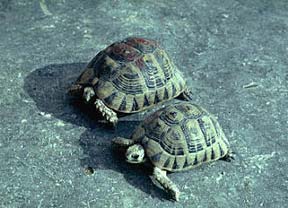
Above: Female (left) Male (Right)
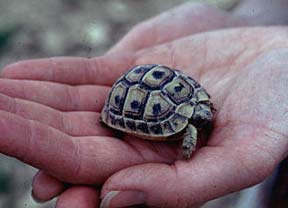
Above: A juvenile
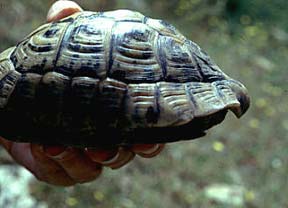
Above: Adult males frequently possess a very characteristic 'overshoot' of the supracaudal (just above the tail).
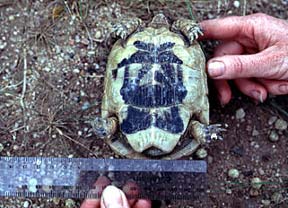
Above: Adult females have shorter tails and are 'broader' at the 'waist' than males.
Captive Care
These are very sensitive little tortoises. They must be kept warm, and they do not tolerate wet and cold conditions at all. They MUST NOT be mixed with ANY other species. This is VITAL, as they have virtually no resistance to alien diseases and they will rapidly develop serious 'runny nose syndrome' or other respiratory symptoms if allowed contact with other than their own kind.
Diet
These tortoises are strictly herbivorous. No animal protein should be given. Provide a good mixture of green-leaf plant material with added vitamins and minerals. Juveniles in particular have a high calcium demand. Good general feeding advice for all Mediterranean tortoises can be found at Tortoise Trust member Lin King's excellent site, www.tortoises.net and also on our own 'Preventing Dietary Disasters' page.
Housing
Provide warm, dry indoor accommodation over winter and in summer or spring during periods of bad weather. Daytime temperatures should be minimum 20 C with a 26 C hot spot for basking. Overnight, temperatures can fall to 15 C . We find ceramic infra-red dull emitter heating elements work well - but a standard 100W reflector bulb (spot-lamp) is also satisfactory. Alternatively, the new UV-Heat lamps are excellent, and are near ideal for this species. You will find more on these in our very comprehensive 'Understanding Reptile Lighting' article.
We find indoor wooden 'pens' better than glass tank-type vivaria for keeping these tortoises active and healthy. Glass tanks do not offer adequate microclimate or ventilation opportunities. We use a sand/soil 50/50 substrate to a depth of about 2 inches or 50mm.
If you have juveniles, the type of semi-arid species accommodation shown here works very well for Tunisian tortoises in our experience.
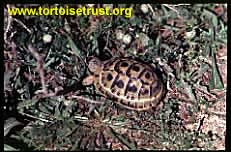
In fine weather during summer, these tortoises should be housed out-of-doors in a secure area with plenty of natural grazing.
Hibernation
No! This species DOES NOT hibernate. They are very thin little tortoises and do not carry adequate reserves of fat to see them through a hibernation. In the wild, they live in a coastal zone which is very hot in summer and warm in winter. In summer, they aestivate to escape the heat, and are most active from December to March.
All photos by A. C. Highfield, taken in the field in Tunisia.